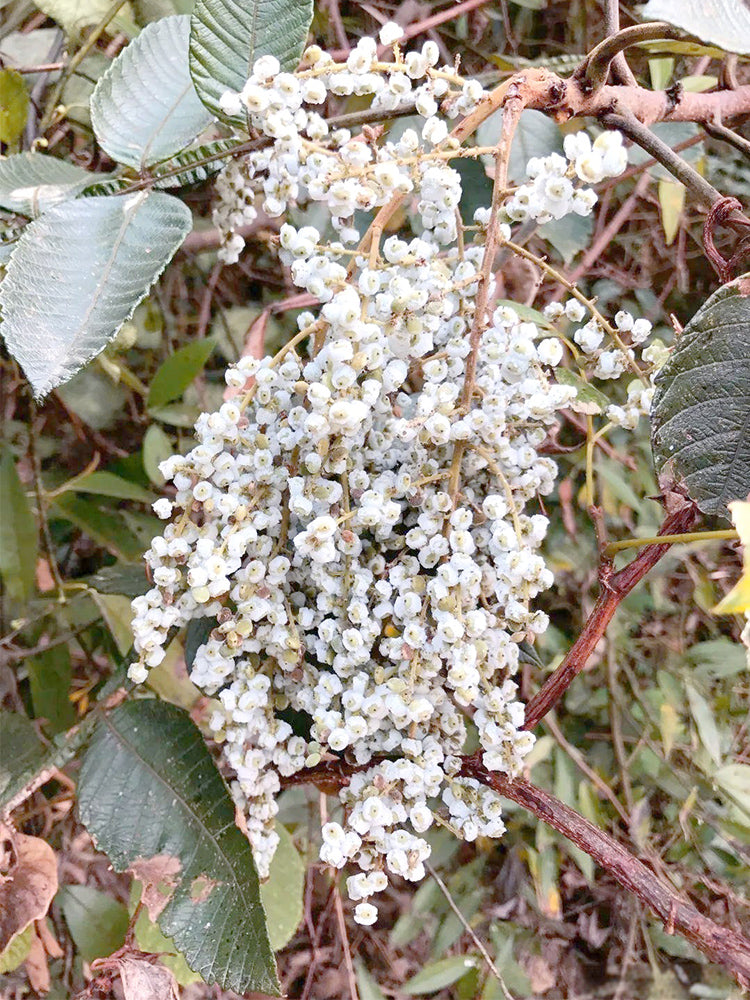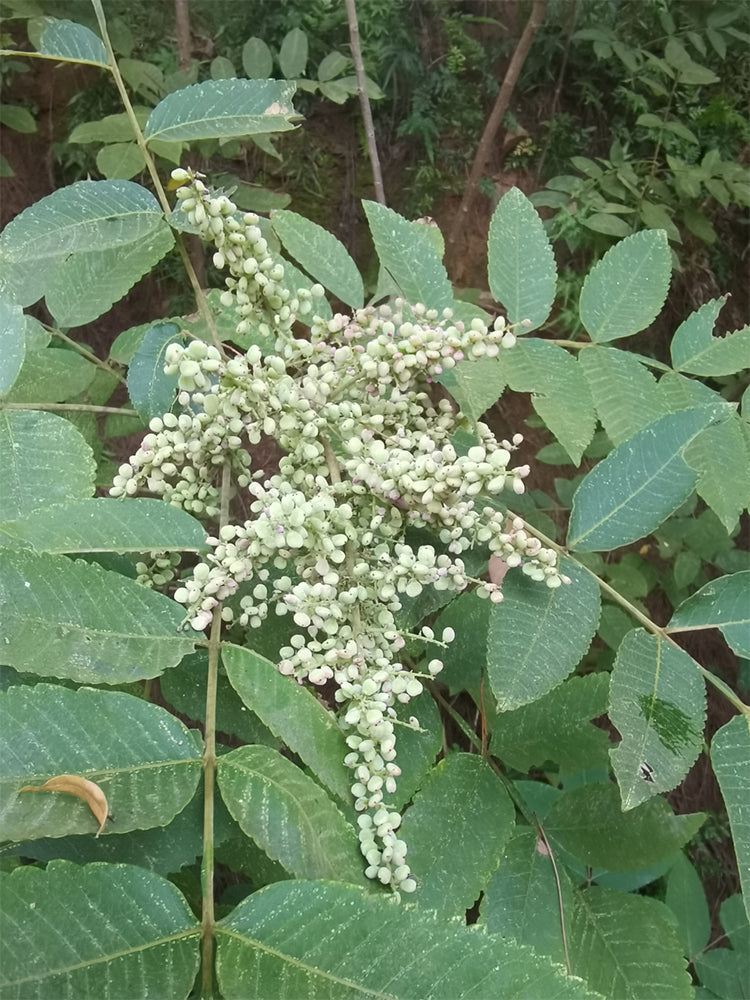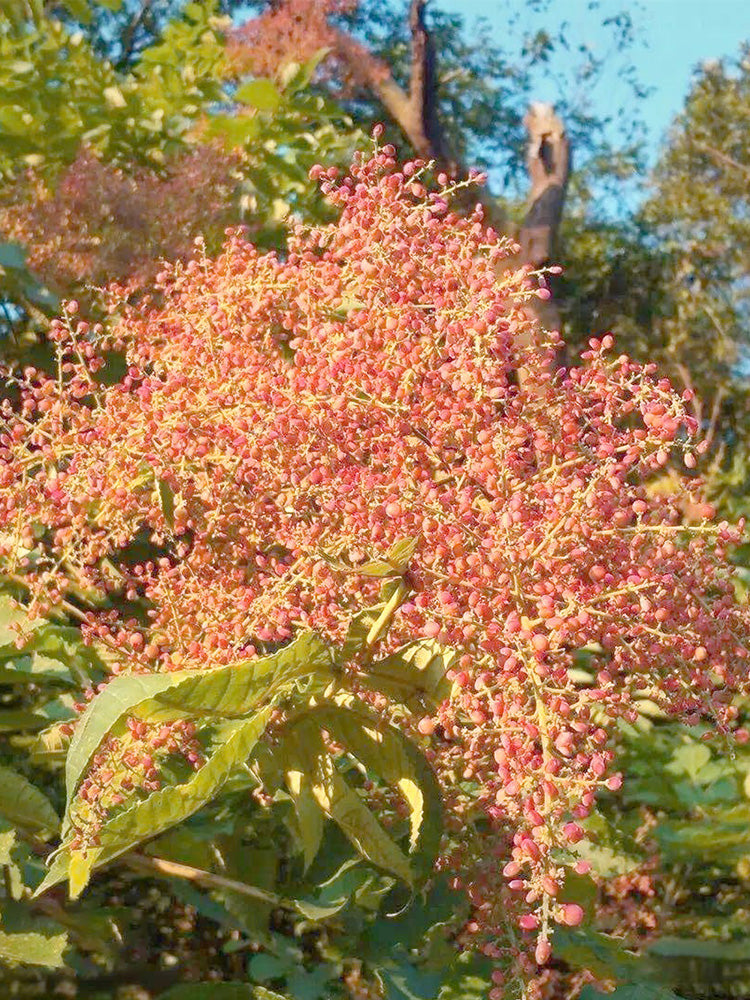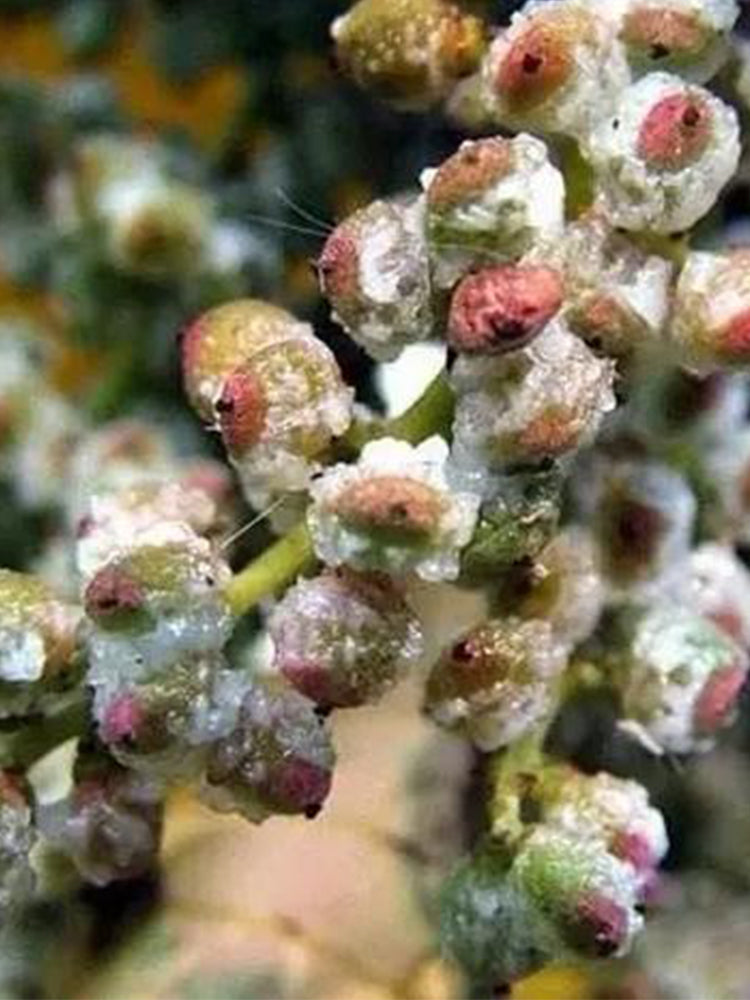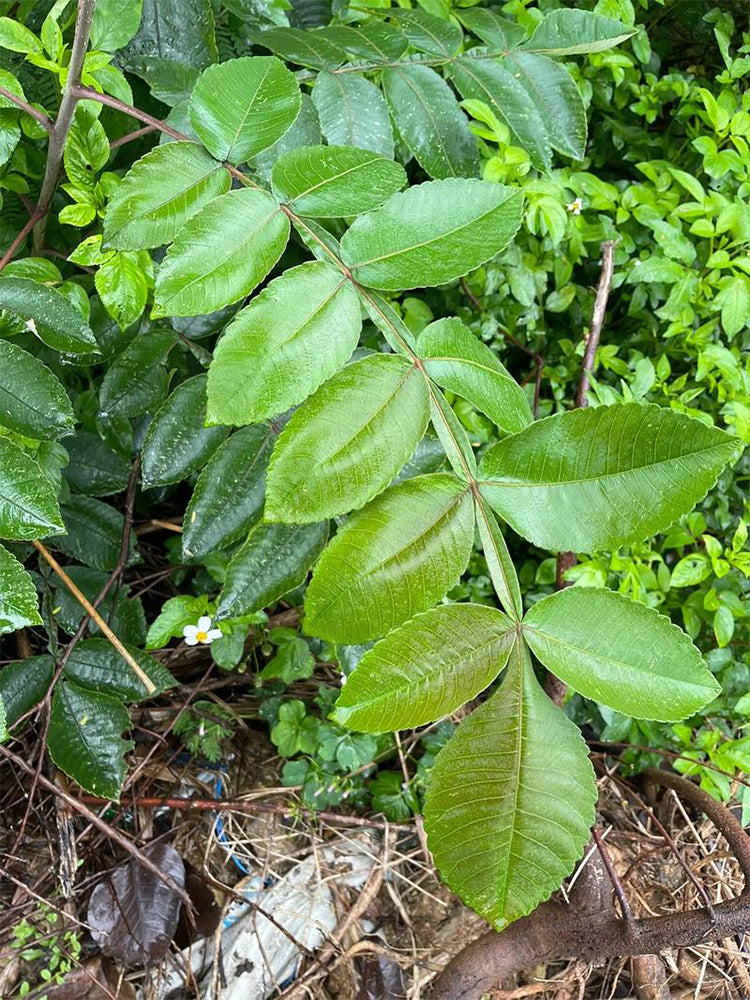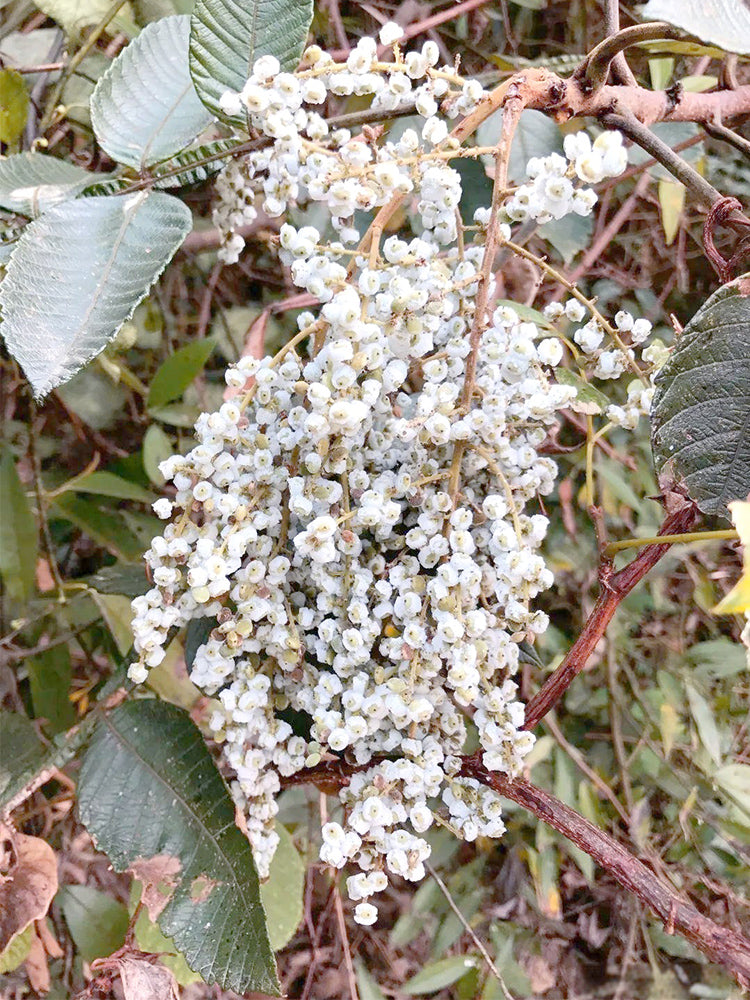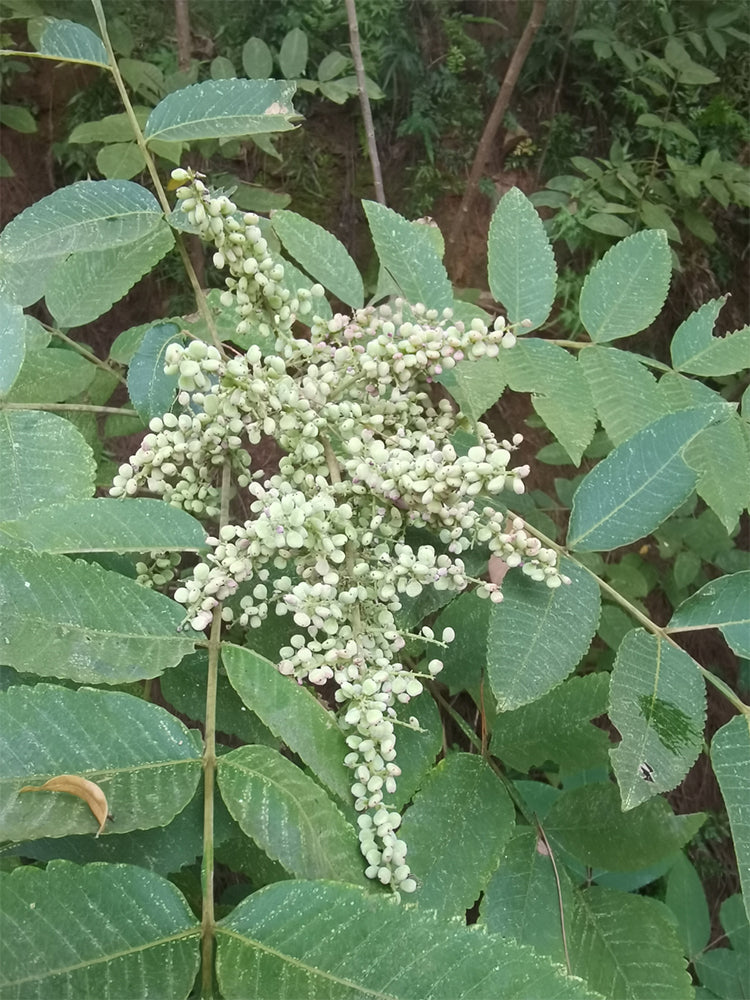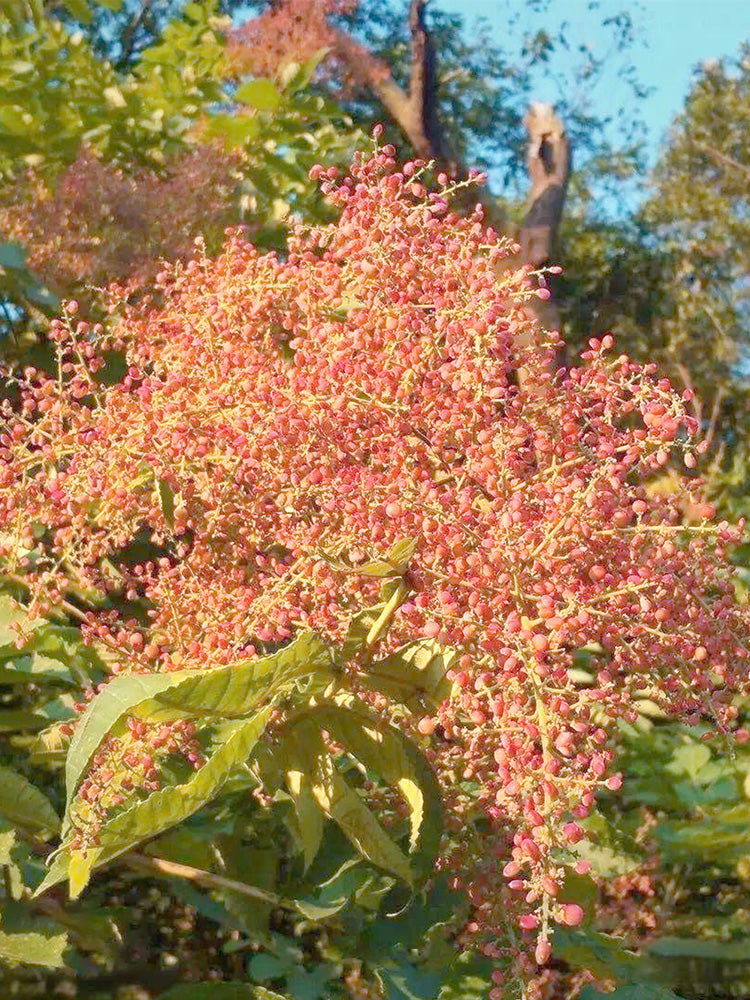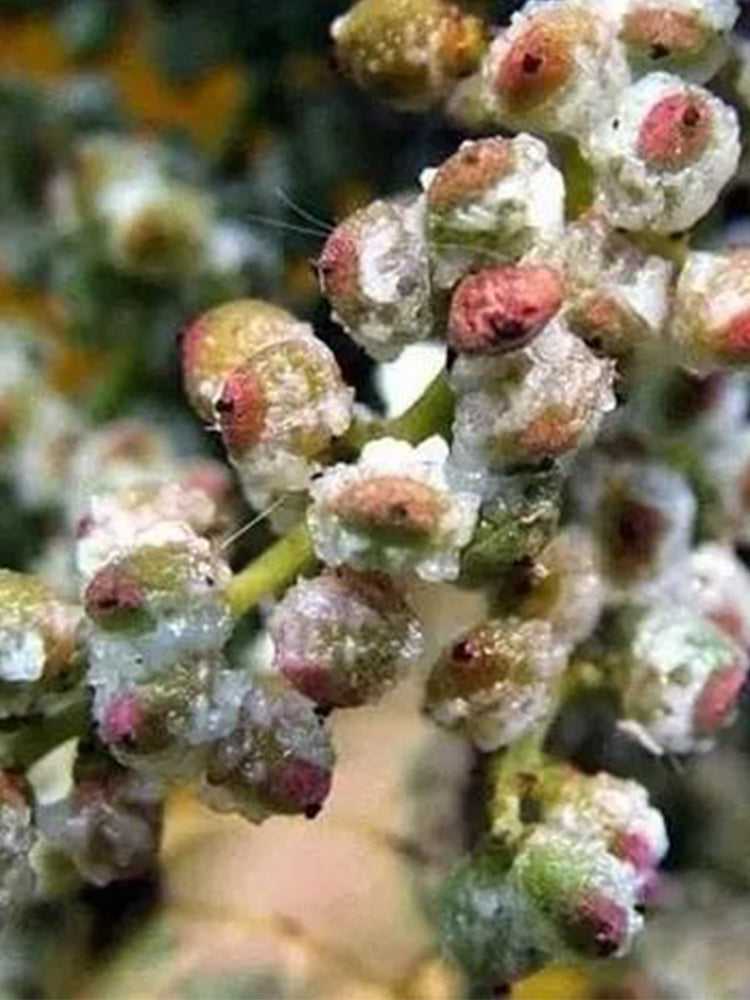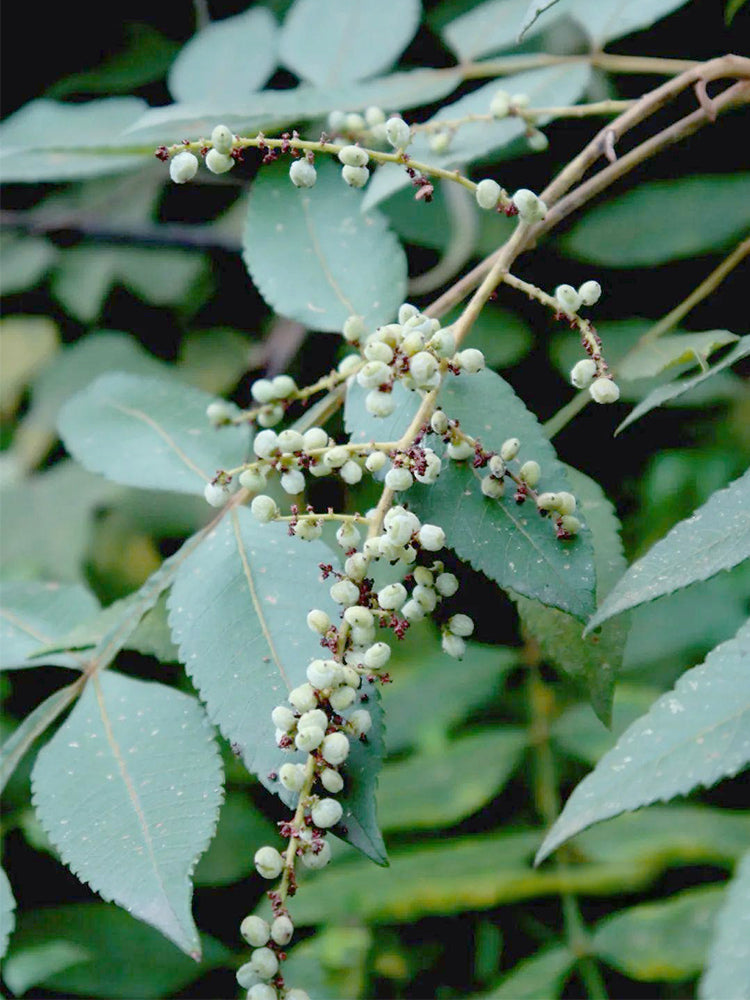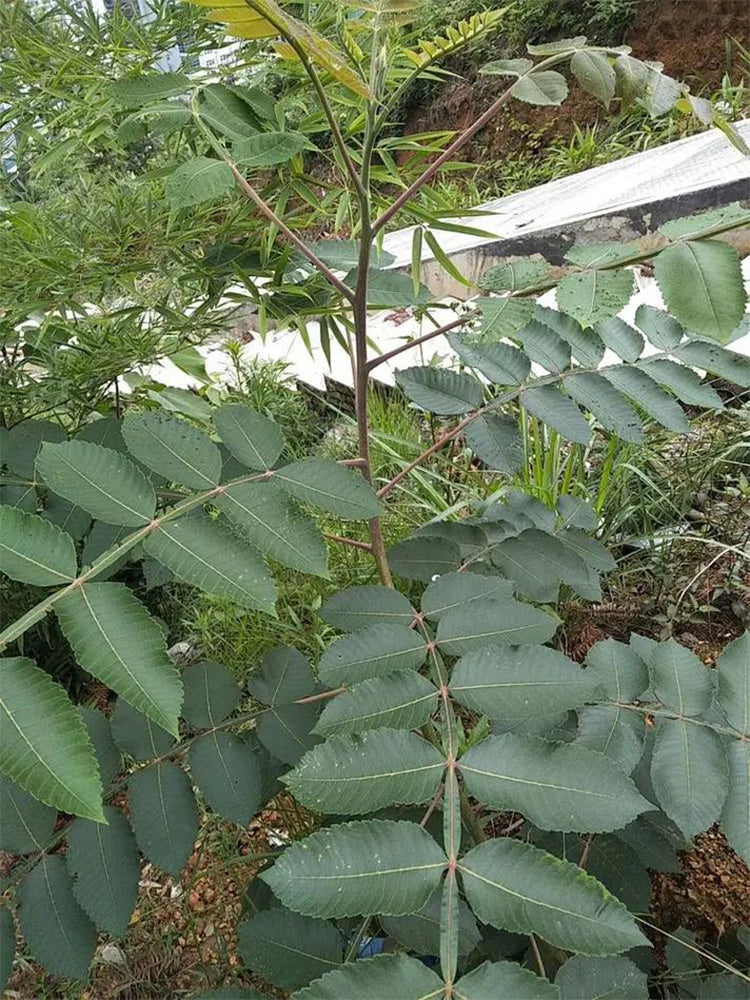BELLFARM
Chinese Sumac (Rhus chinensis Mill.)
Sale
Sold out
Regular price
$2.99 USD
Regular price
$4.99 USD
Sale price
$2.99 USD
Unit price
per
Couldn't load pickup availability
-
5-14 Days delivery.
-
Ship out within 24 hours.
Varietal Characteristics:
- Chinese Sumac (Rhus chinensis Mill.), a deciduous small tree of the genus Rhus in the Anacardiaceae family, reaches a height of up to 10 meters. Its twigs are brownish-brown, and its leaves exhibit diverse morphology with rounded bases, dark green adaxial surfaces and pale green abaxial surfaces, and are sessile. The panicles are broad and multi-branched, with female inflorescences being shorter and densely pubescent. The white bracts and oblong petals revolute during flowering. The spherical drupes turn red at maturity, with flowering from August to September and fruiting in October. The name originates from its unique ability to absorb soil salts and secrete them as brine onto the plant surface, leaving salt crystals after evaporation.
- Rhus chinensis is heliophilous, cold-tolerant, and highly adaptable, thriving in various soil conditions. It typically grows on sunny slopes, valleys, and sparse forests or thickets at mid-to-high altitudes. Its robust root system, rapid growth, strong suckering capacity, and tolerance to drought and barren soils make it a pioneer species for soil conservation and ecological restoration of degraded lands (e.g., mining areas and coal slag deposits).
- The tree serves diverse purposes: When parasitized by Chinese sumac aphids (Melaphis chinensis), its young leaves form medicinal galls known as "Chinese gallnuts" (Galla Chinensis). The whole plant exhibits pharmacological effects such as promoting salivation, reducing inflammation, resolving phlegm, relieving coughs, and nourishing pulmonary-renal functions. Its tender stems and leaves, rich in nitrogen, phosphorus, and other nutrients, decompose readily, serving as excellent green manure, edible wild greens, or livestock feed. The flowers provide premium nectar and pollen for apiculture in early autumn. In autumn, its foliage turns crimson while branches bear clusters of orange-red drupes, offering exceptional ornamental value for landscaping. Integrating ecological rehabilitation, economic benefits, and aesthetic enhancement, Chinese Sumac stands as a high-potential multifunctional species.
- Chinese Sumac (Rhus chinensis Mill.), a deciduous small tree of the genus Rhus in the Anacardiaceae family, reaches a height of up to 10 meters. Its twigs are brownish-brown, and its leaves exhibit diverse morphology with rounded bases, dark green adaxial surfaces and pale green abaxial surfaces, and are sessile. The panicles are broad and multi-branched, with female inflorescences being shorter and densely pubescent. The white bracts and oblong petals revolute during flowering. The spherical drupes turn red at maturity, with flowering from August to September and fruiting in October. The name originates from its unique ability to absorb soil salts and secrete them as brine onto the plant surface, leaving salt crystals after evaporation.
- Rhus chinensis is heliophilous, cold-tolerant, and highly adaptable, thriving in various soil conditions. It typically grows on sunny slopes, valleys, and sparse forests or thickets at mid-to-high altitudes. Its robust root system, rapid growth, strong suckering capacity, and tolerance to drought and barren soils make it a pioneer species for soil conservation and ecological restoration of degraded lands (e.g., mining areas and coal slag deposits).
- The tree serves diverse purposes: When parasitized by Chinese sumac aphids (Melaphis chinensis), its young leaves form medicinal galls known as "Chinese gallnuts" (Galla Chinensis). The whole plant exhibits pharmacological effects such as promoting salivation, reducing inflammation, resolving phlegm, relieving coughs, and nourishing pulmonary-renal functions. Its tender stems and leaves, rich in nitrogen, phosphorus, and other nutrients, decompose readily, serving as excellent green manure, edible wild greens, or livestock feed. The flowers provide premium nectar and pollen for apiculture in early autumn. In autumn, its foliage turns crimson while branches bear clusters of orange-red drupes, offering exceptional ornamental value for landscaping. Integrating ecological rehabilitation, economic benefits, and aesthetic enhancement, Chinese Sumac stands as a high-potential multifunctional species.
